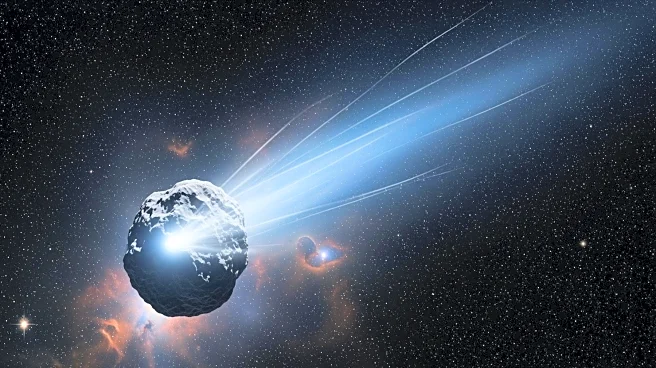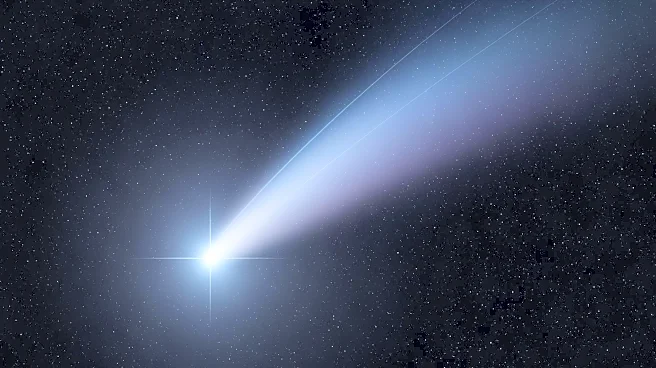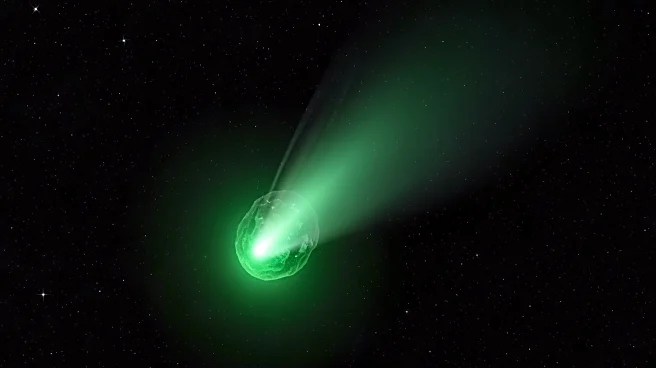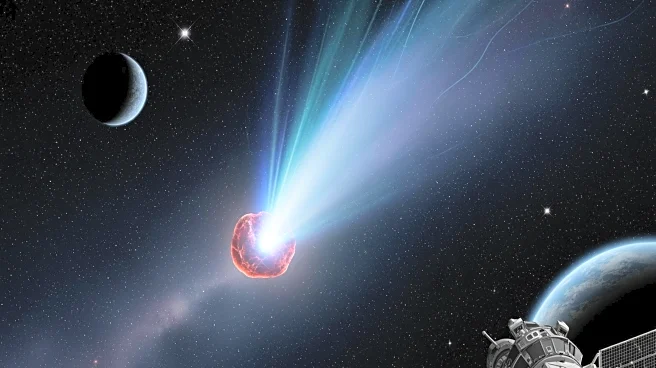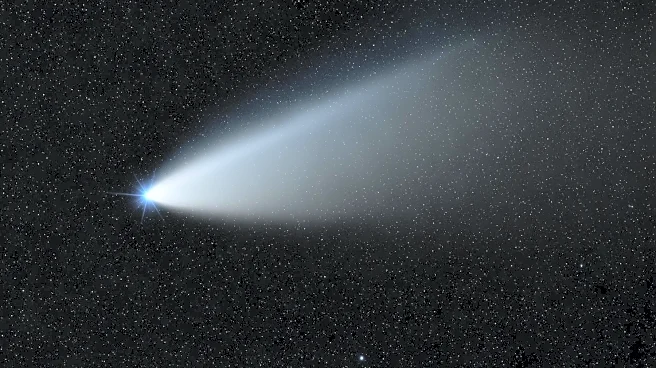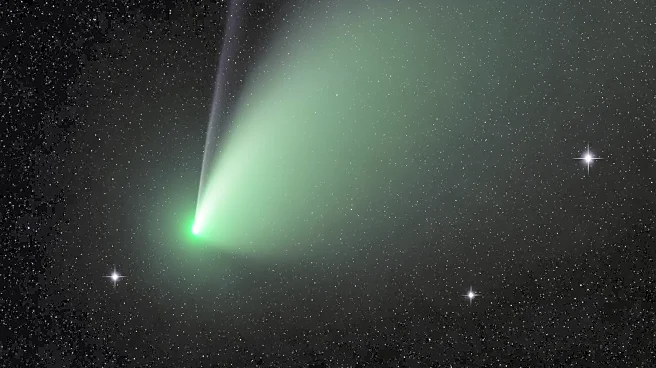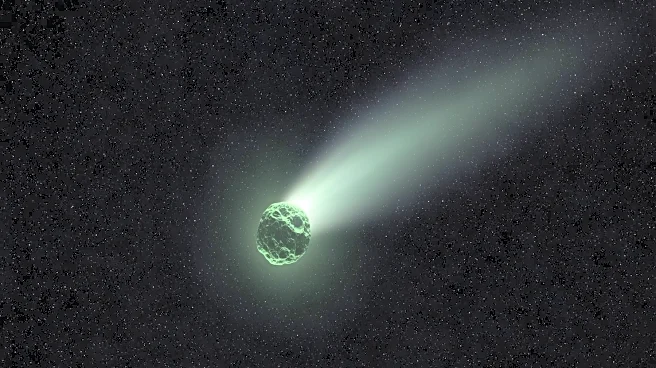What's Happening?
Interstellar comet 3I/ATLAS, the third confirmed interstellar visitor after 'Oumuamua and 2I/Borisov, is generating interest due to its unusual behavior. Recent images have revived debate over whether
the comet shows a conventional post-perihelion tail, with some images appearing tail-less. New analyses highlight complex jet structures, including sunward anti-tail features, suggesting the need for follow-up observations with Hubble and JWST. The comet is racing through the inner solar system at 210,000 km/h and is not a threat to Earth, with its closest approach being 270 million km away on December 19, 2025.
Why It's Important?
The comet's behavior is fueling speculation about its nature, with some suggesting it could be an alien spacecraft due to its unusual jet geometry and brightness changes. However, mainstream researchers attribute these phenomena to cometary explanations, emphasizing the importance of viewing geometry. The comet's interstellar origin offers a unique opportunity to study material from outside our solar system, potentially revealing insights into the formation of planets and solar systems in other parts of the galaxy.
What's Next?
As 3I/ATLAS re-emerges into the pre-dawn sky, coordinated photometry and deep imaging are expected to clarify its tail and jet morphology over the next 1-2 weeks. Spacecraft perspectives from Mars and attempts by ESA's JUICE mission may provide additional insights. The comet's closest approach to Earth on December 19, 2025, will offer a good window for follow-up spectroscopy and imaging from both hemispheres.
